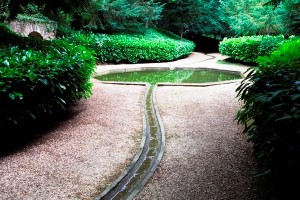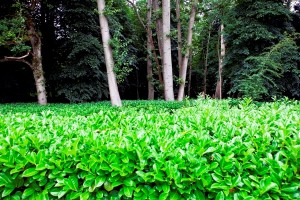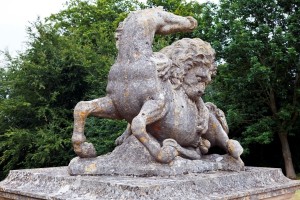"The bronze quartermoon had just set when he ran into the remains of a Sioux warrior...
The white man might sometimes bury his dead kin six feet under, as deep as he made his privies,
but the red devil placed his dead six feet above ground for all men to see ...
reared up out in the open so that his gross dark ignorant body could be given back to the
powers of heaven and to the four quarters of the universe and to all the rains and to the wingeds
The white man might sometimes bury his dead kin six feet under, as deep as he made his privies,
but the red devil placed his dead six feet above ground for all men to see ...
reared up out in the open so that his gross dark ignorant body could be given back to the
powers of heaven and to the four quarters of the universe and to all the rains and to the wingeds
of the air and to the little people of the earth."
- Lord Grizzly, by Frederick Manfred
The act of lifting up a revered object in display for all to see, or a physical going up into a high place, is a powerful gesture, perhaps even a natural inclination hard wired by evolution into the human brain. My recent visit to the High Line brought some rather powerful emotions to the fore and, as I tried to understand my response to the visit, I found myself entertaining thoughts along this line. This wasn't a random impulse, but a direct response to feelings of being in that particular place, late on a sunny, very windy October afternoon, near sunset.
| Southern end of the High Line, where it passes beneath the Standard Hotel. |
On my recent visit, I was rather enchanted by the experience of the place, and by the idea of the elevated space as a kind of refuge, a high place set aside for special things, like an alter. And, as I had recently read the quoted passage about an isolated Souix burial in Lord Grizzly, it occurred to me how universal is this symbol of the raised gesture, the high place, the garden in the sky. Moses going up to Mount Sinai...
But, as I said, this wasn't a random confluence of thoughts. I came directly from my experience, the feelings evoked by the High Line space. I visited with my partner, Phil (in the backpack), and my high school friend Will (leaning over).
| In the Gansvoort Woodland section of the High Line, raised beds of Corten steel make it easy to enjoy the colors and textures of ground covering sedges. |
| Birches, Carex pensylvanica, Stachys 'Hummelo' |
That may sound strange as a description of an elevated park in Manhattan, but it was my feeling about the place on that day. No. I don't fool myself that most visitors consciously think about a walk on the High Line as a spiritual experience, but I do believe most feel something out of the ordinary. I haven't yet heard anyone who's visited the High Line say they didn't like it, or that it was a disappointment. I hear only positive, and usually enthusiastic, comments. Why so?
First a map of the route, taken from the High Line web site, just to show its layout, and to emphasize its physical narrowness, how close it forces people to be with each other and with the plantings, then some photos taken on that windy, sunny October 9, with commentary of course.
Apart from being above street level, which alone makes for a special kind of space--a setting apart and a setting above--the secure, secluded space the High Line occupies is given a sensuous beauty and a sense of physical protection by an extraordinarily well designed array of perennials, trees and shrubs, many of prairie origin, many native to the area, some from far distant places--but all with a naturalistic look reminiscent of the wild, self-seeded growth that characterized the abandoned rail line before it was transformed into an urban horticultural and theatrical venue (it is quite theatrical, especially lighted at night). The sense of peaceful isolation and solitude in the midst of urban busy-ness was part of the experience of the overgrown rail structure long before the High Line park was conceived. It was unique even then, and it was that specialness that led to the desire to prevent destruction of the structure, and eventually to the formal conceptualization, design and construction of the High Line.
And it's usually crowded with people. How can a place with crowds of strangers have a spiritual feeling about it? Why not? Mecca? The banks of the Ganges? Santiago de Campostela? Canterbury? I find some of the most compelling photos of the High Line to be those showing people strolling along the park or sitting, talking, reading, just enjoying the light and air. There is a hidden drama being enacted here, even if most people don't have the intent of engaging in a spiritual act or even think of their actions in that context.
As the map shows, the long, narrow design forces visitors into a relatively small space, and focuses the eye on other visitors and passersby. This combination of physical nearness, anonymity, and the freedom to observe given by the spatial design creates a feeling of otherworldliness that has a profound effect on one's experience of this place: a little like a stage set, a little like a consecrated space for ritual engagement.
This psychological "preparation" of the mind's eye awakens the senses, much as foreign travel stimulates a kind of hyperawareness of one's surroundings, and makes the plantings resonant with significance. But before I push this metaphor too far, let's take a look at some of the plantings in mid-October.
My route was from the Gansevoort Woodland heading north through the Washington Grasslands.
Sections of the old rail line have been reconstructed as reminders of what was once there. These are among my favorite parts of the High Line, perhaps because they elicit powerful recollections of railroad tracks from my childhood, when I watched the City of New Orleans and the Panama City Limited resting for a new minutes on the rails in my home town in the deep South. In this tableaux the rails are abandoned, and the overplanting evokes a powerful nostalgia for something that has been lost.
These are real railroad track, but also nonfunctional reconstructions, artificial and highly theatrical, I think, in the way they manipulate images and memories. This is not to lessen their "truthfulness" in creating mood and evoking sense of place and the particular history of the High Line. These tableaux stir the heart (certainly mine).
The rails also work as abstract patterns, almost like pattern in fabric, sculpture or painting, as geometric background contrasting with the soft, loose, rounded (and transient) plant forms.
In this next photo, I believe the spiky dead plants are Stachys monieri 'Hummelo', a signature Oudolf selection named for his garden in Hummelo in The Netherlands. The late afternoon shafts of sunlight create a stirring scene of considerable complexity and depth, in what appears, to me, to be one of the most successful integrations of hardscape design with planting design in the entire park.
If I may borrow a photo from my friend Judy Mann, you can see how the Stachys 'Hummelo' looked earlier in the season:
Less emotionally stirring, but beautiful in a practical and utilitarian way, is the seating on the High Line. Below is an example of a repeated design, in which the floor of the park soars up to become a bench, in this case with a back for added comfort.
This beauty below appears to be an exotic put in just for seasonal show. And not just one plant, but one of several the size of small trees. I believe this is Chlerodendrom trichotomum (Harlequin Glorybower), which just can't be hardy this far north, unless we are seeing an example of aggressive "zonal denial" at work.
And Clerodendron intermixed with Catalpa, for foliage contrast and added visual interest...
Further up the line, an area of groundcover with masses of Heuchera in the foreground, Aster tartaricus 'Jin Dai' on the right, and (I think) a cultivar of Deschampsia cespetosa on the left. The High Line plantings are, in a sense, a new palette for Piet Oudolf. Because of the nature of the place (it's meant to evoke the original wild plantings that grew spontaneously on the abandoned rail line) and the physical constraints of planting in a relatively shallow "ground" (this is after all really an elaborate green roof), Piet's High Line plantings are subtler, and considerable more restrained, they we usually expect from him.
Moving left, the planting becomes mostly Deschampsia, with islands of Aster tartaricus and Persicaria. And note the line of track and the original High Line railing retained in the background.
And further to the left, Sesleria autumnalis, a beautiful almost chartreuse grass that blooms in the fall, takes over for the Deschampsia, with the scattered asters maintaining continuity. Of course, none of these plants is native, but they have a native "look."
And more Sesleria autumnalis with Aster tartaricus ...
Persicaria amplexicaulis 'Fire Tail', I think, with a Trycirtis (Toad lily) to provide autumn color ...
Astilbe makes a highly effective geometric groundcover long after all color has faded. The plants are bedded in the same gravel that would be used on a real rail line (though smaller), another self-conscious reminder that this park is a "transformed" rail line.
A native Vernonia (Iron weed), positioned in the center of the traffic flow so as to force visitors to see it as they must move around it to either left or right, must have attracted a lot of attention when it was covered in bright purple flowers. Even now, in seed, it's quite a sight.
Looking toward the Chelsea Market underpass, where public artworks are periodically installed, people are constantly coming and going, or stopping to rest in lounge chairs, reading, visiting, taking the sun. I doubt that many pay as close attention to the plants as I do, but it's obvious the plants do get a lot of attention. The design of the High Line makes this happen by virtue of simple geometry and limited space.
After passing beneath the Standard Hotel, visitors are immersed in the plantings as the park passage divides into much narrower paths.
An installation of colored glass panes, suggestive of stained glass windows strictly urbanized ...
The rather preciously named Northern Spur Horticultural Preserve is probably as close as any part of the High Line gets to the original wild vegetation, and it is a beautiful thing. My camera, or perhaps my photographic skills, are not adequate to showing you the amazing range and subtlety of colors in the plantings, even this late in the season.
And again you can see the recreated rail line serving as a nostalgic reminder of the park's origin ...
And off the other side, to the east, the Empire State Building ...
Moving further up the park into the Chelsea Grasslands, off to the left we see the IAC building by Frank Gehry with its irregular shape, and an extraordinarily beautiful building (the tallest of the three, with color-tinted windows) by Jean Nouvel, named Nouvel Chelsea and, no, you probably can't afford to live there. (I haven't mentioned, yet, that the High Line has spurred amazingly rapid development of the former meat market district and western Chelsea). Yes, vigorous capitalism is at work.
Nearing the end of the park, you're likely to smell the distinctive odor of the native Prairie Dropseed (Sporobolus heterolepis), which is planted in masses. In the future, the park will continue north from here.
Call it ironic, if you will. I didn't plan it this way. But it is true that Prairie Dropseed is a native of the short grass prairies of the North American midwest. If I'm not mistaken, this is the area in which much of the novel, Lord Grizzly (see opening quotation), is set, and thus we've come round to the place where we started, and to a reminder of the quality of the experience of the High Line, a special place, a high place set apart.
Here is a brief video that, though not of the best quality, does provide a glimpse of the feeling of that day. That roar is the wind.
For two very different takes on the High Line, see A Tidewater Gardener and Victoria's Backyard.








